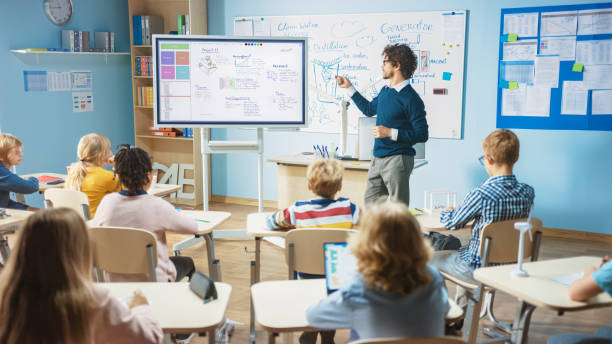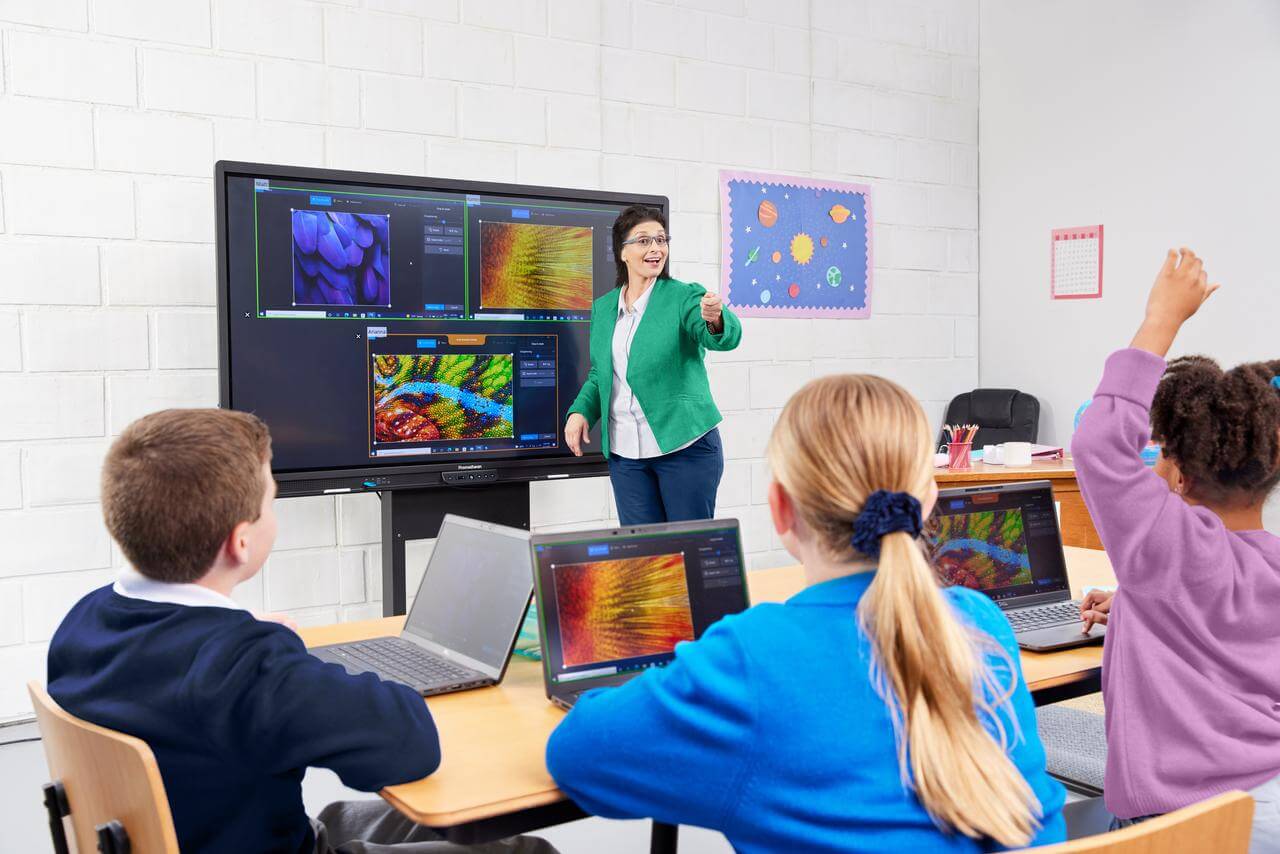Personalized Primary Science Tuition Singapore to Cater to Your Child’s Needs
Personalized Primary Science Tuition Singapore to Cater to Your Child’s Needs
Blog Article
A Comprehensive Overview to the Numerous Discovering Methods in Main Science Instruction
The expedition of diverse discovering techniques in main scientific research direction provides a chance for educators to boost student engagement and comprehension significantly. By examining hands-on understanding techniques, inquiry-based approaches, and collaborative techniques, we can identify efficient methods that accommodate different finding out styles. Additionally, the assimilation of technology and set apart direction plays an important function in fostering an inclusive setting. However, the inquiry stays: exactly how can these approaches be successfully implemented in the classroom to optimize their impact? The solution lies in a more detailed analysis of each approach and its implications for teaching scientific research.

Hands-On Understanding Strategies
Hands-on learning strategies play a crucial duty in main scientific research direction, involving students in energetic expedition and trial and error. These techniques allow learners to engage directly with phenomena and materials, cultivating a much deeper understanding of scientific concepts. By using manipulatives, models, and real-life experiments, teachers produce an environment where students can observe, hypothesize, and evaluate their concepts.
Such strategies not only improve comprehension yet likewise grow vital thinking and problem-solving skills. When students join activities like constructing easy equipments, planting seeds, or conducting chemical responses, they are urged to ask inquiries and seek responses through their very own monitorings. This experiential technique helps to demystify complicated clinical principles, making them a lot more easily accessible and relatable.
Additionally, hands-on knowing promotes cooperation amongst peers, as trainees typically operate in groups to perform experiments or share findings. This teamwork not just enriches their understanding experience however likewise creates essential social abilities. Inevitably, incorporating hands-on strategies in main scientific research direction cultivates a lifelong love of knowing and inquisitiveness regarding the environment, laying a strong structure for future scholastic quests in scientific research and beyond.
Inquiry-Based Discovering
Inquiry-based learning is an instructional method that urges trainees to ask concerns, examine sensations, and construct their very own understanding of clinical principles. This approach moves the emphasis from typical teacher-led instruction to an extra student-centered experience, where learners take the effort in their academic trip. By promoting curiosity, inquiry-based knowing advertises deeper interaction with the material, enabling pupils to discover subjects in a significant context.
In method, this technique commonly includes hands-on experiments, observations, and vital reasoning tasks that straighten closely with the clinical approach. Pupils are encouraged to create hypotheses, design investigations, and analyze information, which cultivates crucial skills such as analytical and analytical reasoning. The duty of the educator in this structure is to promote expedition, assisting pupils via the questions procedure while urging independent idea and collaboration.
In addition, inquiry-based learning supports a sense of ownership over the knowing process, inspiring trainees to seek expertise proactively. This approach not just improves understanding of scientific principles however likewise cultivates a lifelong love for discovering, gearing up trainees with the abilities essential to navigate an increasingly complicated world.
Collaborative Discovering Approaches
Joint discovering techniques empower pupils to participate in meaningful interactions with peers, cultivating a common obligation for their academic results. In primary science direction, these methods motivate learners to collaborate to discover clinical principles, fix issues, and conduct experiments (primary science tuition Singapore). By taking part in team tasks, trainees can take advantage of diverse perspectives, enabling richer understanding and retention of clinical knowledge
One secret facet of collaborative understanding is the emphasis on interaction abilities. Students have to articulate their ideas, pay attention actively to others, and negotiate ideas, every one of which resource are critical competencies in both real-world and scholastic contexts. This social interaction not just boosts their understanding of scientific concepts but also promotes team effort and problem resolution skills.
Furthermore, collaborative understanding frequently leads to boosted inspiration and interaction. When pupils see the value of their payments within a group, they are more probable to take ownership of their understanding journey. Educators can facilitate this process deliberately structured team jobs that align with curriculum objectives while offering support on efficient collaboration methods. On the whole, including collective discovering strategies in primary science instruction grows a dynamic discovering atmosphere that prepares students for future scholastic and social challenges.
Innovation Integration in Scientific Research
The assimilation of innovation in key science guideline enhances discovering experiences by providing innovative devices and sources that sustain numerous mentor techniques, including collective knowing - primary science tuition Singapore. Making use of digital platforms, simulations, and interactive applications allows students to engage deeply with clinical principles, promoting a much more hands-on strategy to knowing
Digital labs, as an example, allow students to conduct experiments safely and efficiently, advertising inquiry-based knowing. These tools can simulate real-world clinical circumstances, allowing trainees to visualize intricate procedures that would certainly be challenging to replicate in a traditional classroom setting. Technology promotes interaction and partnership amongst trainees, as they can share searchings for and function together on tasks via on the internet platforms.
In addition, multimedia presentations and educational video clips can improve lessons by accommodating diverse discovering designs, making abstract concepts much more accessible. Data evaluation devices likewise empower trainees to collect and analyze clinical information, strengthening crucial assuming abilities. In general, the strategic consolidation of technology in key scientific research guideline not just improves involvement however also prepares students for a technologically sophisticated culture, equipping them with important skills for future clinical ventures.
Differentiated Instruction Approaches
Differentiated direction approaches are essential for attending to the diverse demands of students in primary science education. These strategies make it possible for teachers to customize their teaching methods to accommodate differing capacities, interests, and finding out designs within the classroom. By utilizing separated instruction, instructors can create a comprehensive environment that cultivates involvement and enhances understanding of clinical ideas.
One effective method is to utilize adaptable organizing, which enables students to work together with peers helpful hints at similar ability degrees or with differing perspectives. This method motivates peer learning and advertises important reasoning. Furthermore, providing choices in jobs can empower students, enabling them to choose jobs that reverberate with their passions while still fulfilling curricular objectives.
Additionally, including tiered assignments is another valuable technique. By making tasks with differing degrees of complexity, instructors can make sure that all students are try this appropriately tested, no matter their proficiency. Using developmental evaluations to assess understanding more allows instructors to adjust their training approaches dynamically, making sure that each student receives the assistance they need.
Eventually, implementing differentiated direction strategies in key science education and learning not just improves pupil learning results yet likewise grows an enthusiasm for scientific research, preparing students for future scholastic pursuits.

Verdict
In summary, efficient main science instruction requires a complex method that encompasses hands-on discovering, inquiry-based approaches, and joint strategies. The assimilation of technology and distinguished instruction further satisfies diverse knowing styles, fostering a setting for expedition and critical reasoning. By executing these methods, educators can boost student engagement and comprehension, ultimately supporting a long-lasting enthusiasm for scientific research and questions. Such detailed methodologies are necessary for developing educated and interested future scientists.
The expedition of diverse discovering approaches in main scientific research instruction offers a possibility for educators to improve trainee interaction and comprehension substantially.Hands-on learning techniques play an essential role in main science instruction, engaging trainees in active expedition and trial and error.Inquiry-based knowing is an educational method that encourages pupils to ask inquiries, examine phenomena, and create their own understanding of scientific concepts.Joint understanding techniques empower trainees to involve in significant communications with peers, cultivating a shared obligation for their instructional outcomes. On the whole, including collaborative discovering strategies in primary scientific research guideline cultivates a dynamic knowing setting that prepares trainees for future academic and social difficulties.
Report this page